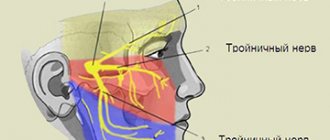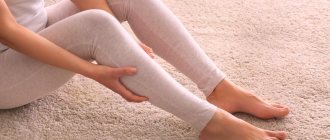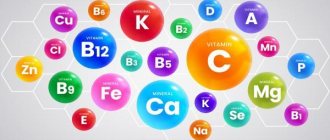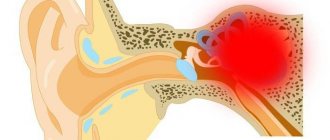Synonyms: nerve compression syndrome, compression neuropathy, peripheral nerve compression.
A pinched nerve occurs when a peripheral nerve loses mobility, flexibility, or is compressed by surrounding tissue. Nerve compression can cause neuropathic/neurogenic pain, which can be either acute or chronic.
Pinched nerve syndromes (referring to a general group of signs and symptoms) occur in individuals as a result of swelling of surrounding tissues or anatomical abnormalities.
Compression neuropathies occur at the level of the peripheral nerves and are typically characterized by pain and/or loss of function (motor and/or sensory) of the nerves as a result of chronic compression. To adequately diagnose a pinched nerve, it is important to know the neural pathways and areas of peripheral nerve innervation/responsibility.
Friends, Georgy Temichev’s seminar “Diagnostics and treatment of pain in the lumbar region” will take place very soon. Find out more...
The most common types of nerve entrapments include (but are not limited to):
- Carpal tunnel syndrome (pinched median nerve).
- Cubital tunnel syndrome (compression of the ulnar nerve).
- Superior outlet syndrome (brachial plexus lesion).
- Suprascapular nerve entrapment.
- Compression of the obturator nerve.
- Tarsal tunnel syndrome (compression of the posterior tibial nerve).
- Damage to the interdigital nerves (especially between the 3rd and 4th fingers), known as Morton's neuroma.
- Muscular arcade of the supinator (also known as the arcade of Froese).
- Pinching of the posterior interosseous nerve of the forearm.
It should be noted that chronic mild nerve irritation can lead to increased nerve tension. This may be the underlying cause of a person's symptoms.
Finally, it is important to keep in mind that damage or compression of nerve structures often occurs due to joint or muscle injuries. A thorough assessment of the affected area is necessary to make an accurate diagnosis.
Etiology
Pinched nerve syndrome can result from chronic damage to the nerve as it passes through the osseous-ligamentous tunnel. Compression usually occurs between the ligamentous canal and adjacent bony surfaces.
In cases of nerve entrapment, at least one part of the compressive surface is movable. This results in either repeated compression or friction/sliding against sharp or hard edges, resulting in chronic trauma. Immobilizing the nerve with a splint or lifestyle modifications may relieve symptoms. Compression neuropathies can also be caused by systemic disorders such as rheumatoid arthritis, acromegaly, or hypothyroidism.
Pinched shoulder and arm muscles
Periodically occurring pinching of the shoulder muscle is a malfunction of the ligamentous and tendon apparatus. Normally, all the muscles of the upper limb work in a strictly coordinated manner. When the flexors relax, the extensors function and vice versa.
Primary pinching of the arm muscle can occur during moments of excessive effort, for example, to lift a weight. A tendon or ligament is sprained. Microscopic cracks appear in their structure, capillary blood accumulates in them and the process of aseptic inflammation begins. As a result, fibrous scars are formed. They tear with subsequent injuries. When a large area of scar is formed, performance impairment occurs and there is a risk of muscle tissue infringement.
The causes of pinched muscles of the upper limb can be:
- degeneration of the articular lip of the humeral joint;
- change in the position of the head of the humerus due to degeneration of cartilaginous synovial tissue;
- cicatricial deformation of the ligamentous and tendon tissue of the joint;
- excessive physical activity;
- weightlifting;
- disruption of tissue innervation (brachial plexitis, radicular syndrome in cervicothoracic osteochondrosis).
The main symptoms: pain, inability to make certain movements, the appearance of bruises and swelling, palpation of an overly tense pinched muscle.
Pathophysiology
By its nature, nerve damage can be either ischemic or mechanical.
Repeated injury and trauma to the nerve can lead to microvascular (ischemic) changes, swelling, damage to the outer layers of the nerve (the myelin sheath) that facilitate the transmission of nerve impulses, and structural changes in membranes at the organelle level (both the myelin sheath and the nerve axon) . Focal segmental demyelination in the area of compression is a common feature of compression syndromes. Full restoration of function after surgical decompression is associated with remyelination of the injured nerve. Incomplete recovery occurs due to Wallerian axonal degeneration and persistent fibrotic changes at the neuromuscular junction, which may prevent complete reinnervation and restoration of function.
What happens if you trigger scalene syndrome?
The most dangerous complication of anterior scalene muscle syndrome is thrombosis in the subclavian artery system. For a better understanding, it must be said that the vertebral arteries depart from the left and right subclavian arteries, from which, in turn, the arteries of the brain begin. Thrombosis in this system is a truly deadly complication of anterior scalene syndrome and requires immediate surgical intervention.
The second serious complication is paresis (incomplete paralysis) and atrophy of the hand muscles.
Another striking and unpleasant complication is a violation of the biomechanics of the neck and body as a whole. This point is a little difficult to understand for a non-specialist, but now we will understand it. So. With prolonged tension of the scalene muscles, they shorten. This increases cervical lordosis and moves the head forward. To compensate for balance and center of gravity, the muscles in the back of the neck are forced to tighten and, accordingly, overload. Soon, due to overload, secondary pain trigger points will form in the back muscles of the neck, and myofascial syndrome will develop. Further, if left untreated, increased cervical lordosis will lead to compensatory curvature of the spine in the thoracic and lumbar regions, because it is forced to seek balance. Curvature of the spine disrupts the distribution of axial loads on the intervertebral discs and, thus, opens the way to the formation of protrusions and disc herniations not only in the neck, but also in any other compensatory overloaded place in the spine.
Myofascial scalene syndrome
That is why timely consultation with a doctor, early detection and proper treatment can avoid all these serious complications of anterior scalene syndrome.
Risk factors
Certain factors put people at greater risk of experiencing nerve compression or pinching. These factors include:
- Previous fracture or dislocation in the area.
- Scar tissue and/or myofascial tension.
- Bone spurs/arthritis.
- Hematoma or swelling.
- Cysts.
- Repetitive or prolonged activity requiring repeated movements.
- Systemic diseases such as diabetes.
Because compression neuropathies are so varied in signs, symptoms, causes, and locations, it is imperative for the physician to perform a thorough history and physical examination to rule out more serious conditions.
What to do if a muscle is pinched: how to remove and treat
The first thing to do when a muscle is pinched is to stop exerting physical activity. Then you need to seek medical help. Applying cold to a pinched area is not recommended as it may make the situation worse.
Before removing a pinched muscle, it is necessary to exclude rupture and other types of integrity violations. Only an experienced traumatologist can do this. After a violation of integrity has been ruled out, manual methods can be used.
Some ways to treat pinched muscles are described below. Our manual therapy clinic practices an individual approach to each patient. A manual examination is carried out, an accurate diagnosis is made, and after that a course of therapy is developed.
Symptoms
Symptoms of a pinched nerve may vary from person to person. Often they will be localized or referred sensations along the affected nerve. The most common symptoms include:
- Localized or referred pain.
- Numbness, tingling, or electric sensation.
- Paresthesia.
- Burning.
- Impaired movement of the affected part of the body.
- Muscle weakness.
- Dry thin skin (in case of chronic pinching of motor and sensory nerves).
Inspection
Visual assessment
Visual inspection and palpation of the entire upper/lower limb, cervical or lumbar spine is mandatory. The examination should focus on limb asymmetry, muscle atrophy, or abnormal posture. The limbs should also be compared for changes in skin temperature and pulse quality in provocative positions.
Palpation
By applying pressure to the area where the nerve is believed to be compressed, the doctor can reproduce the patient's symptoms.
Upper limb
Sensorimotor testing and provocative maneuvers such as the Spurling sign, Tinel sign, median nerve compression test (upper limb nerve tension tests), Phalen test, and elbow flexion test may be helpful in diagnosing cervical radiculopathy or specific nerve entrapment syndromes.
Lower limb
Evaluation of the lower extremity should also include detailed sensorimotor testing of the peripheral nervous system of the lower back and lower extremity. Below are common nerve tension tests that may be performed in a clinic. These tests may provoke symptoms in the patient or, alternatively, symptoms such as tingling or numbness.
- Straight leg raise test.
- Slouch test.
- Thomas test.
Anesthetics and electroneuromyographic study
- If you inject a few milliliters of local anesthetic into the area of suspected nerve damage, you can reduce or completely eliminate the existing symptoms.
- Electroneuromyography can also confirm nerve damage. However, there is no consensus on the “gold standard” for diagnosis. Some experts believe that there are no ideal diagnostic methods (X-ray, ultrasound, MRI, scintigraphy) that could detect a pinched nerve.
- It is also important to note that a normal ENMG does not exclude symptomatic compressive neuropathy, especially in the early stages.
Pinched back and neck muscles
When the back muscles are pinched, a characteristic nagging pain appears, which prevents any movements (turning the body, bending). If there is excessive tension in the muscular frame of the back, problems with diffuse nutrition of the intervertebral discs may occur. In this case, the patient quickly develops secondary dorsopathy with impaired function of the lower extremities.
Pinching of the muscles of the back and neck often accompanies exacerbation of osteochondrosis, the development of hernial protrusion of the nucleus pulposus of the intervertebral disc.
As a rule, pinched neck muscles can be accompanied by myositis and tension syndrome. The cause of the disease can be:
- staying in a static position for a long time (for example, working at a computer);
- exposure to negative environmental factors (cold, hot air, pressure from incorrectly chosen clothing);
- spread of infection and toxic substances released by pathogenic microorganisms through the blood and lymphatic fluid (observed with tonsillitis, ARVI, influenza and a number of other diseases);
- injuries to the fascia, tendon or surrounding ligaments;
- vertebral displacement and radicular syndrome with compensatory strain of the neck muscles;
- retrolisthesis and other types of instability of the vertebral bodies.
If the muscles of the neck, collar area and back are pinched, urgent help from a chiropractor or osteopath is required. Pinching can be removed using osteopathic techniques, massage and reflexology. In some cases, physiotherapy, kinesiotherapy and traction traction of the spinal column are used.
Treatment
Treatment for a pinched nerve requires the doctor to consider many variables specific to the individual. The degree of compression, the location of the compression, and the current stage of the recovery process (acute, subacute or chronic stage) all must be taken into account.
Since this condition is usually not life-threatening, it is important to keep moving. A physical therapist or health care professional can tell you what exercises and movements to avoid to prevent further nerve irritation. Clinicians should begin with nonsurgical treatment options and also consider surgery if conservative approaches have failed.
Non-surgical treatment
- To eliminate the underlying mechanisms causing nerve irritation, postural and biomechanical correction are important. The practitioner should also be aware of existing movement patterns that may cause the nerve to rub against or become pinched by surrounding tissue.
- The doctor may consider using non-steroidal anti-inflammatory drugs such as ibuprofen or naproxen to help reduce swelling around the nerve. Although steroids such as Cortisone are very effective anti-inflammatory drugs, their injections are not usually used because there is a risk of nerve damage associated with their use.
- Orthotics or splinting should also be considered as this allows the affected nerve to rest.
- Exercises to increase nerve glide may also be considered if the nerve is in an appropriate healing phase (this type of exercise is not used during the acute phase).
Surgery
Surgery should be considered as a last option for pinched nerve syndrome because... it may entail long-term rehabilitation treatment. Again, due to the variability that exists with this type of pathology, it is best to consult with a physician or neurosurgeon for the best options for the patient. Treatment may involve a simpler procedure such as local arthroscopic debridement or a more complex procedure such as neural decompression.
Pinched leg and thigh muscles
Pinched leg muscles occur in athletes and people engaged in hard physical labor. The quadriceps femoris muscle, which consists of four bundles and is the quadriceps, is often affected. Responsible for extension of the upper limb at the knee and adduction of the thigh to the anterior abdominal wall.
The broad lateral femoral muscle (m. vastus lateralis), which forms the lateral roundness in the upper part of the lower limb, may be pinched.
The largest of all the muscles of the thighs. A flat, unipennate muscle that determines the roundness of the lateral part of the thigh. It has three attachments using tendons - to the upper end of the femur, the tibial condyle and the patella. It is protected by the fascia lata of the thigh, which, in case of scar deformation as a result of numerous traumatic effects, can cause pinching.
When a leg muscle is pinched, the vastus intermedius, vastus intermedius, sartorius, biceps, semitendinosus and other types of muscles can be affected.









